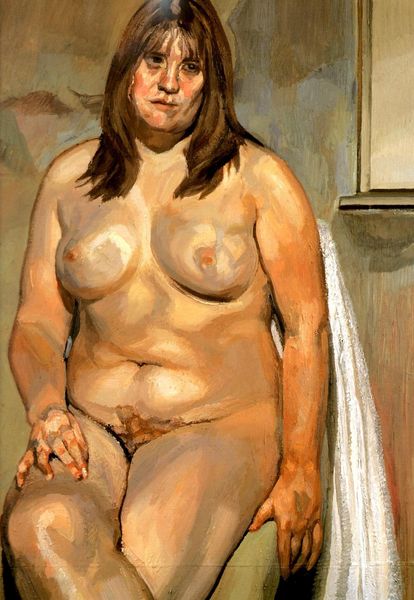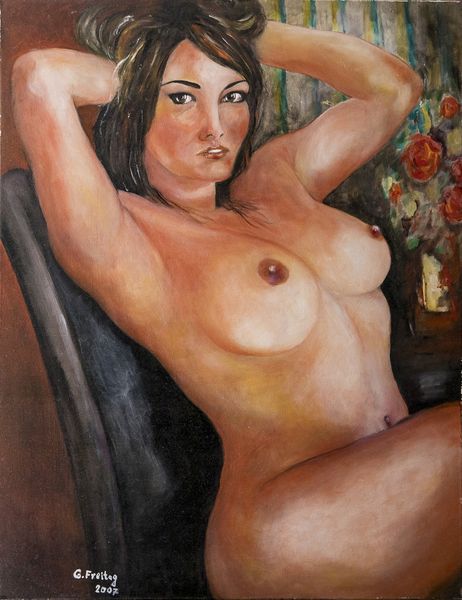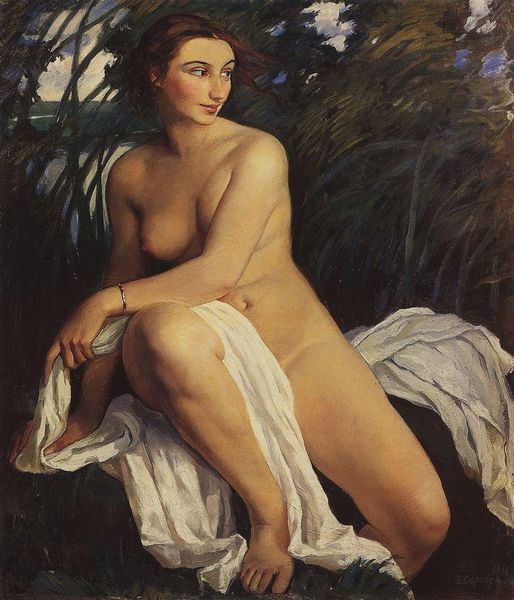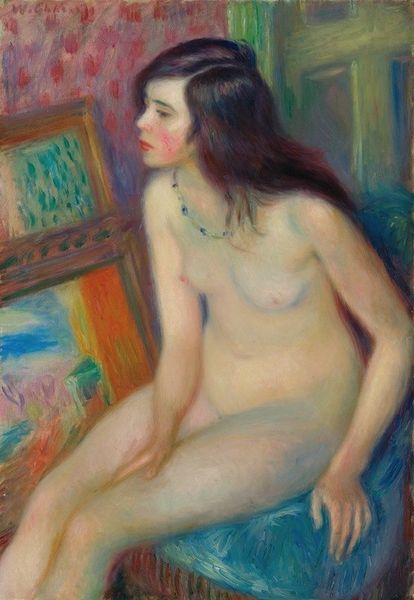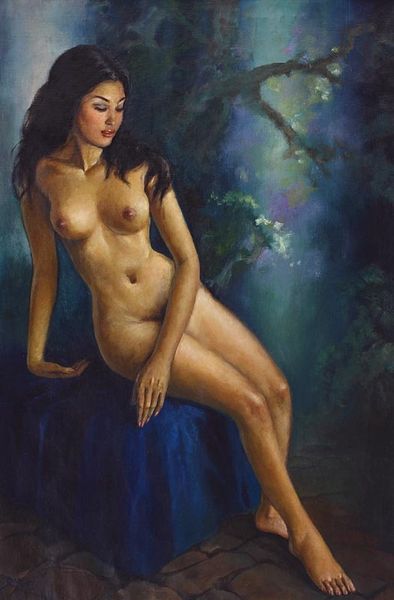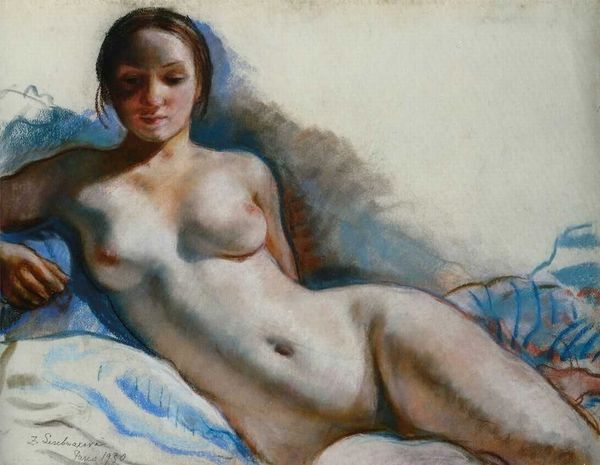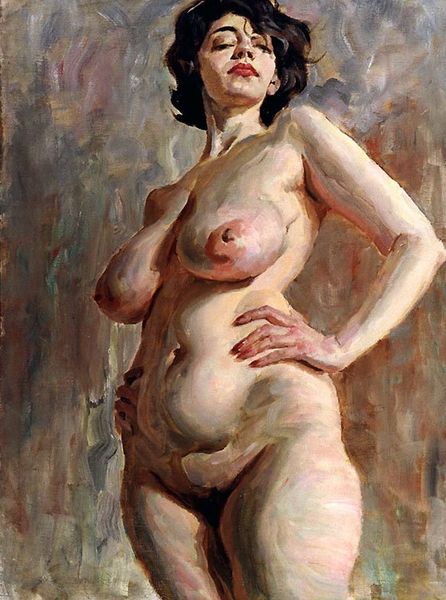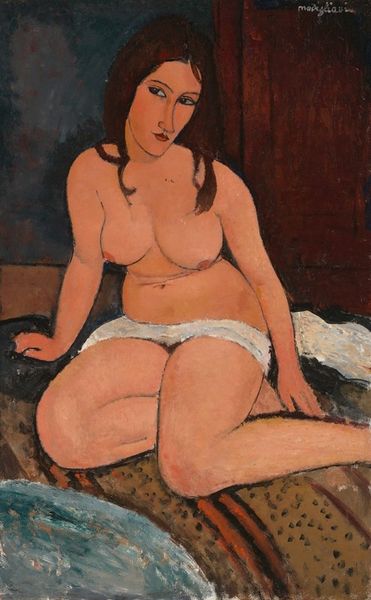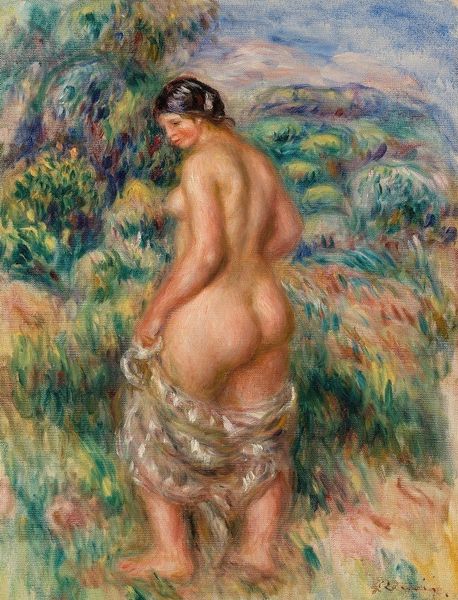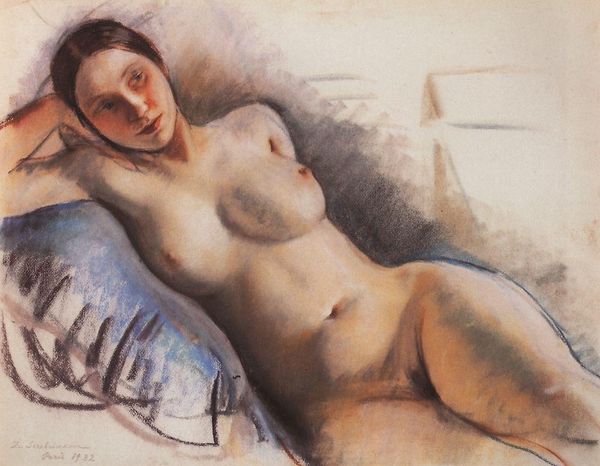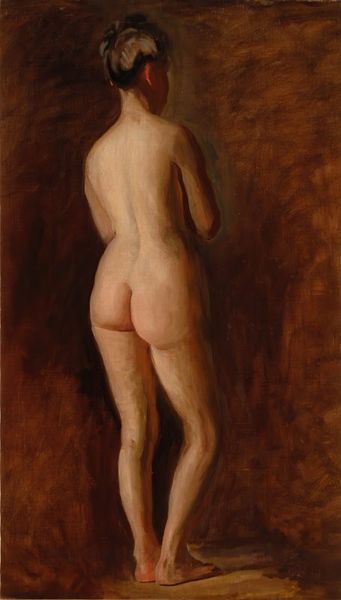
Copyright: Zinaida Serebriakova,Fair Use
Editor: We’re looking at Zinaida Serebriakova’s “Braids,” painted in 1930 using oil paints. What strikes me most is the intimacy, but also how the softness of her flesh contrasts with the darkness of her hair. What compositional elements stand out to you? Curator: Indeed, it is in these formal oppositions where the painting finds its strength. Note the careful balance the artist achieves between light and shadow, creating depth and volume. Observe how the artist employs a limited color palette, focusing on variations of tone rather than hue. Editor: I see what you mean about the tonal variations. The way the artist uses brown and white seems almost sculptural. What would you say the form communicates in terms of narrative? Curator: The composition invites us to read the interplay of these two opposing directions—of form and its subversion. Is there, perhaps, a deeper structure that challenges conventional representations of the female nude, disrupting the typical male gaze through its self-aware positioning? Editor: That’s a compelling interpretation. It's intriguing how the structure seems to invite the gaze but also complicates it, inviting multiple meanings to be perceived. Curator: Precisely! This complexity arises not only from what is depicted, but also from how it is rendered on canvas. The surface tension within the structure engages viewers at a cognitive level, disrupting the easy acceptance of form as meaning. Editor: So, the painting's meaning isn't just what’s literally shown but is also embedded in the way it's composed and structured. That gives me a lot to think about. Curator: Absolutely, understanding this, the visual form generates profound layers of signification that demand interpretive openness.
Comments
No comments
Be the first to comment and join the conversation on the ultimate creative platform.
